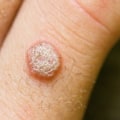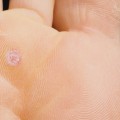Genital warts and HPV are common sexually transmitted diseases. These types of warts, and the types of HPV that cause them, do not increase the risk of cancer. Some people get genital warts just once, while others have recurrent outbreaks. Treatment can get rid of warts, but it can't cure or cure them.
Genital warts are common and are caused by certain types of HPV. They can be annoying, but they can be treated and aren't dangerous. Genital warts are often a sexually transmitted disease (STD). They are caused by HPV (human papillomavirus).There are many different strains of the HPV virus.
Some can cause genital warts, while others can cause cervical cancer and other types of cancer. Genital warts appear as flesh-colored or whitish bumps or bumps. They can be small or large, raised or flat, and appear alone or in groups. While genital warts generally don't cause symptoms such as itching or pain, many people find them embarrassing and can be transmitted from person to person. Around 79 million Americans are believed to have an active HPV infection at any given time, according to the Centers for Disease Control and Prevention (CDC).
Another 14 million people are infected with HPV for the first time each year. However, not all strains of HPV cause genital warts. Some cause common skin warts and others can cause cell changes that can cause cancer in the cervix, vagina, vulva, anus, penis, and oropharynx, the area at the back of the throat that includes the base of the tongue and the tonsils. For many people, HPV infection never causes any symptoms or harm, because the body can get rid of the virus naturally. Finding out that you have a sexually transmitted infection is never a pleasant surprise, but knowing more about it and the treatments available can help you put your mind at ease. Here, we will answer some common questions about HPV.
How Common Are HPV 6 and 11?
One percent of all sexually active men and women get genital warts every year.We see them in all people: pregnant women, young adults exploring their sexuality, older women and men.
How Long After Contact Do Warts Usually Appear?
That's one of the most frequently asked questions, because a person actually asks: “Who gave it to me? Warts usually appear one to four months after being infected with HPV. However, the immune system can keep the virus under control for longer.Do All People Exposed to HPV 6 and 11 Get Warts?
No. Warts may appear after a person is infected, or you may not have any, as the body's immune system fights the virus.Can HPV Warts Appear at Any Time in Life, Even Years After Exposure?
Sometimes, we see them later in life when people get sick or their immune systems are compromised by chemotherapy or other medications. So, they don't just happen when you have a new sexual partner.How Can Sexually Active People Avoid Getting HPV Warts?
Using condoms or “finger condoms” for manual stimulation consistently reduces the risk of acquiring or transmitting the virus that causes warts.In addition, oddly enough, HPV infects cells that divide rapidly. Therefore, anywhere where there is a small trauma, tear, or abrasion, the body can pick up the virus and introduce it into cells. Sometimes we see warts in younger women because it's the first time they've had sex and the vaginal tissue isn't very elastic. The same is true for some older women who have vaginal dryness.
Does The Number Of Sexual Partners A Person Has Over A Lifetime Increase The Risk Of Getting Warts From HPV?
Yes, people who have had more than 10 sexual partners in their lifetime are more likely to report a diagnosis of genital warts than those who have had one or two.The more sexual partners you have, the more likely you are to have different types of HPV infection.
And There's No Limit To How Many Different Types Of HPV You Can Have.
Limiting the number of partners and using condoms are very important in reducing the risk.Are HPV Warts Spread Only Through Genital Contact?
No, you can transmit the virus from any wet source to another. The same types of warts that develop on the genitals can also grow in the mouth and throat and even on the inside of the eyelids. But there has to be a source and usually you're going to carry the virus on your genitals. We need to be very frank about today's sexual practices.There is a lot of oral-genital contact.










